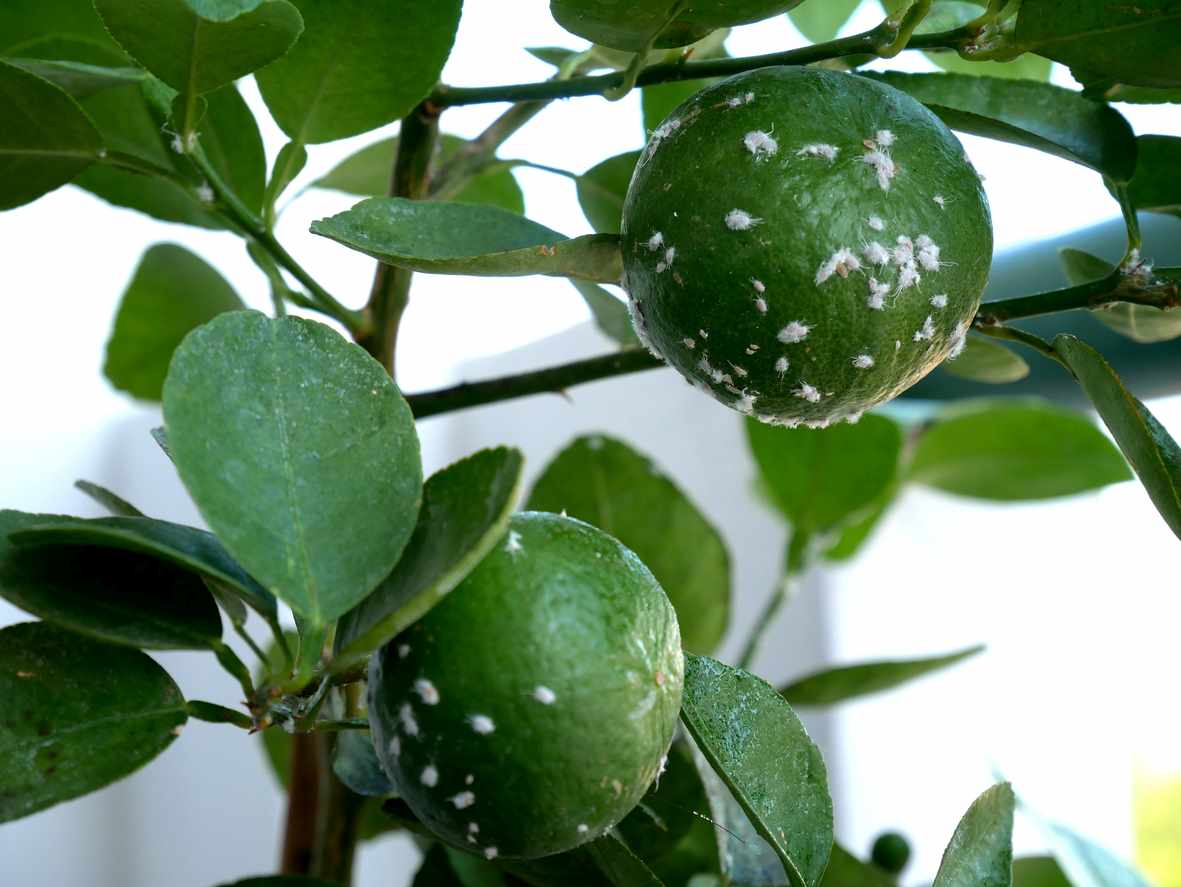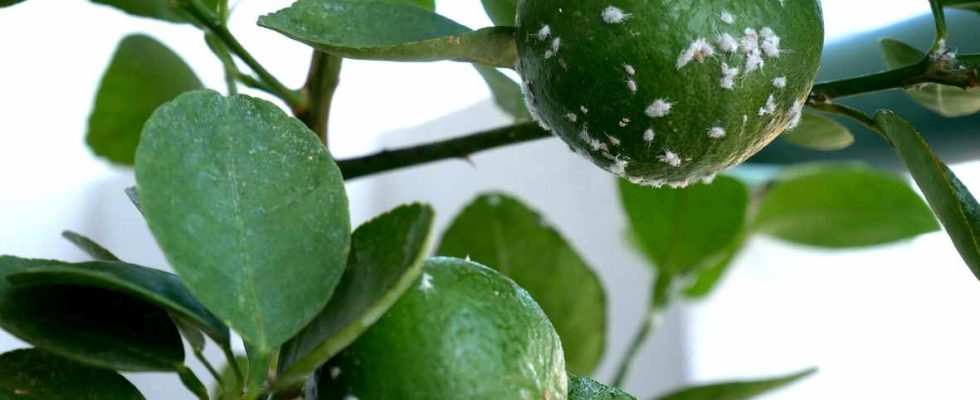
Better understand the lemon mealybug to better eliminate it
The Planococcus citri mealybug, commonly known as citrus mealybug or white orange mealybug, belongs to the family of mealybugs. This is a biting-sucking insect native to Asia which attacks not only citrus fruits grown in pots, such as lemon trees, calamondin, orange trees, etc., but also other plants of indoor like ficus, amaryllis, anthuriums, etc. .
Unfortunately, beyond this mealybug, citrus fruits can also be victims of other species of mealybugs such as the black citrus mealybug, the comma mealybug, the billfish mealybug or the Australian mealybug. It is therefore important to know how to recognize Planococcus citri to better be able to spot it and fight against it.
What does citrus mealybug look like?
In lemon scale insects, males and females are entirely different, and the most problematic for plants are the females and the larvae.
- The female : She can live for several weeks. Measuring about 3 mm long, it has a brownish, oval-shaped body, lined with short waxy filaments and covered with a white wax reminiscent of cotton. One of its distinctive signs is a dark line that runs down the middle of its back. Although they are practically invisible, it has legs and antennae, but lacks wings.
- The male : Unlike females, it only lives a few days and has wings which it uses to fly to females to fertilize. This is, moreover, its only role. Physically, it is slightly larger than the female and resembles neither more nor less than a midge.
The development stages of mealybugs
Mealybugs go through different stages of development over approximately 6 weeks:
- The female lays ovisacs on the plants. These ovisacs are clusters of around twenty pink or amber eggs approximately 0.3 mm long. A single female can lay several hundred eggs in 1 to 2 weeks before dying.
- The eggs hatch about a week later. The female nymphs will then go through 3 stages and the males through 4.
- It is during the first stage of their life that the nymphs are the most mobile. They can then move from plant to plant to settle on another plant from which they will never leave and where they will wait to be fertilized in turn 6 weeks later.
This simplified description allows you to understand that mealybugs will multiply very quickly if the problem is not treated quickly, especially since there can be up to 8 generations over a year.
Why are mealybugs on your citrus fruits and plants?
An invasion of your plants by lemon mealybugs can mainly have two origins:
- You bought a plant in a garden center and this being infected, you brought these unwanted people home. It must be said that this is, unfortunately, the most common cause.
- You maintained your plants with tools that you neglected disinfect beforehand.
Signs and symptoms that should alert you
As mentioned previously, citrus mealybugs are biting-sucking insects: they bite leaves, stems that are still young, etc. to collect the sap. This procedure is not without consequences for the plant thus attacked and it will show signs of discomfort which should alert you. If you monitor your plants regularly, you should be able to detect the presence of mealybugs. Here are some of these warning signs:
- White dots : If, on your plant, you notice small dots of fluffy white wax that you can peel off with your nail, you are in the presence of mealybugs.
- Unhappiness of your plant : You may notice that your plant’s leaves are turning yellow, then falling, that its bark appears injured, or that deformations are appearing.
- Honeydew : You may notice the presence of a sweet, sticky substance adhering to the leaves. This is honeydew, a substance secreted by mealybugs.
- Smoke : Your eye may also be attracted by a kind of soot or black powder deposited on the leaves. This is sooty mold, a black microfungus which, by developing on honeydew, will reduce photosynthesis and worsen the discomfort of your plant. It is therefore important to act quickly before the plant dies.
Prevent the appearance of mealybugs
Prevention requires increased vigilance, especially if your plants are grown in a greenhouse or veranda, because mealybugs thrive in warm and humid environments. Outside, their development is less rapid. Here are the right actions to adopt:
- When purchasing a plant, it is essential to inspect it carefully to avoid bringing these unwanted plants into your home. If in doubt, place the plant away from others for a while.
- When pruning a plant, it is important to properly disinfect your pruning shears to avoid cross-contamination.
- If you put your plants outside during the summer, when you bring them inside for the winter, inspect them so as not to run the risk of bringing mealybugs into your home at the same time. Otherwise, to limit this problem of scale insect invasion, leave your lemon tree in a cool and ventilated location, but protected from frost. You can add a winter veil.
- If you see midges flitting around your plants, inspect them, remembering to look closely at the underside of the leaves and the trunk. You can then spot eggs or, when the mealybugs have developed well, you can even see them with the naked eye.
Fight against the presence of mealybugs
To get rid of mealybugs, it is necessary to be patient, because it is a fairly resistant pest. The best solution is to use black soap. To do this :
- In a sprayer, prepare a mixture based water, black soap and olive oil. You can also add a little lemongrass essential oil, for example.
- Spray this mixture on the whole plantwithout forgetting the underside of the leaves, the trunk, as well as the substrate.
- Also clean the leaves which are covered with sooty mold with a cloth soaked in this mixture.
- Repeat the operation regularly until the mealybugs completely disappear.
- If certain parts are too damaged, it is best to cut them off and throw them in your trash, but definitely not in your compost. Afterwards, remember to disinfect the tool used.

